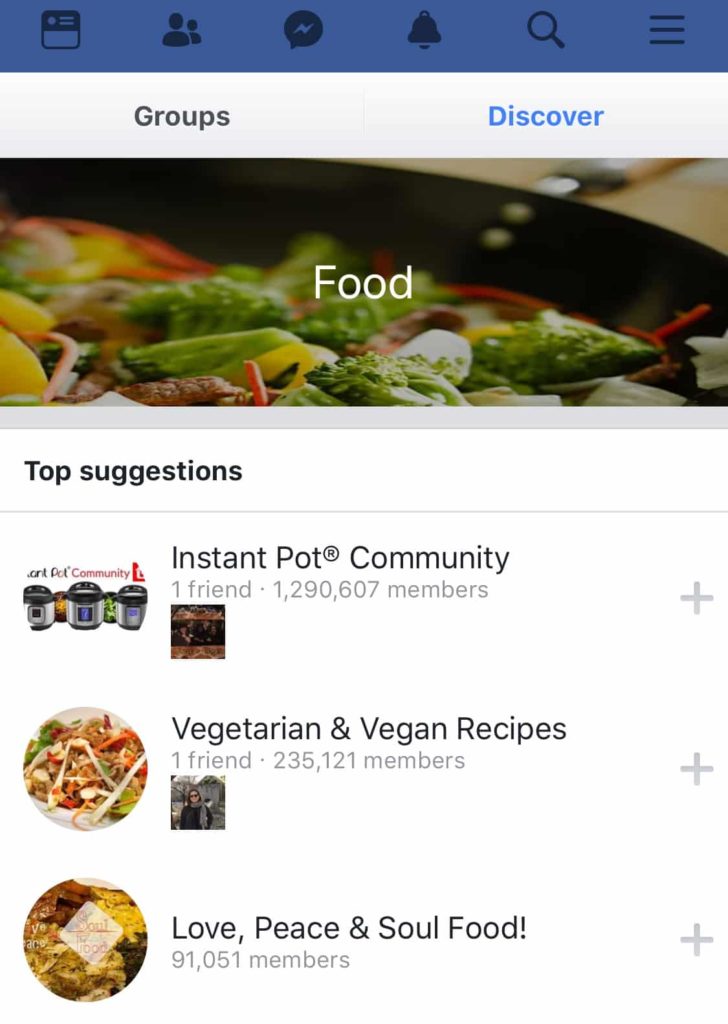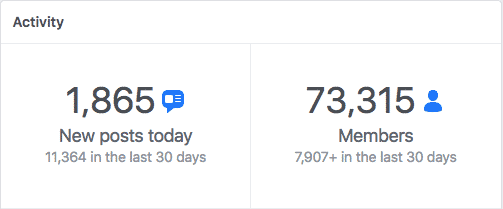How to Reach All the Groups in Social Media
Five things to remember when building social media groups
Groups on social media can be one way of getting your content or message in front of new audiences on social media. But what does a successful group look like?
In recent months, the entreatment of social media groups seems to be growing, as publishers and marketers ponder ways to better engage their social media followers in the face of narrowing algorithmic visibility.
About of the discussion about the potential of social media groups has focussed on fostering word, growing a community and audience, and hopefully extending the accomplish of your content or message. Every bit noted in a social publishing predictions assay on the blog at the starting time of the year:
More than focus on smaller groups and communities could be 1 way of catering to two of the large problems caused past a lack of trust and platforms' desire to stimulate more than chat amongst users themselves, rather than relying on broadcasts from pages with huge audiences. It'southward not just restricted to Facebook, however — WhatsApp, email, Telegram, and more can all be potential gateways to smaller community building efforts.
Publishers such equally NPR, The Washington Post, the Boston World and ProPublica accept devoted energy to building targeted Facebook groups in the last few months. Meanwhile, brands and agencies including HBO, 360i, and more have been developing groups as a way of trying an culling arroyo to sharing news and information in crowded news feeds:

Facebook has a Observe section to suggest Groups based on interests.
But what are the best ways of creating and maintaining a social media group or community, on Facebook, LinkedIn, or even Reddit? We expect at 5 key tips and examples to help become started in the area.
1) Be specific with the group theme
I of the key distinguishing features of successful Facebook groups is their specificity. Borer into a particular area that members will be smashing to come across content nearly is important.
Think nigh the ties that hold potential grouping members' interests – this, equally opposed to the ofttimes generalised nature of pages, is what contributes to social media groups' reputation every bit beingness more than 'sticky' environments for engagement and audition development.
Group themes can exist broad in nature, or else very specific. The Peloton Passenger Facebook group (73,000 members) is intended for 'Peloton members to share their experiences on the Peloton bicycle and iOS app', and sees significant engagement. Looking at that grouping's pinnacle-level stats every bit of February 28th, it'due south articulate that the admins have managed to tap into a very conversational theme for members:

Other examples of include: geographic proximity (such as local news), product use, common interests, news themes, career development and industry advice (the latter ii are peculiarly relevant on LinkedIn).
Ideas might come up from the content that you already create, for social media, or even blogs and newsletters. Are there particular themes that go on recurring? Do certain blog posts get shared more oftentimes than others, or are in that location questions that readers e-mail in about oft? Whatsoever of these signs could be the kernel for an interesting Facebook group.
2) Encourage members to get involved
Ensuring regular member input is key to ensuring the long-term success of whatsoever social media group. While group admins and community managers will continue to have key roles in overseeing the page equally it grows, fostering an environs where grouping members feel comfy and willing to share with the wider group is important.
I way of putting the members front and centre of a social media grouping's output is to consider running a regular member-focussed feature. Examples include a regular member interview, or a 'members' questions' segment.
There are other aspects to the social media grouping's analytics. On Facebook, once the grouping exceeds 250 members, you'll be able to access Grouping Insights, a more granular look at metrics and information around action amid members in the group, which helps pinpoint the most successful themes.
3) Be active in moderating and managing give-and-take
When running a grouping, information technology's important non to let things get derailed. In one case your grouping starts to grow, others may see it as a means of seeding their ain content, messaging or product. In other areas, troll behaviour and consistently negative or unconstructive commenting can brand the group less appealing to a wider audience who are hoping to learn something.
Community managers tin accept the initiative to kickoff conversations in the group, knowing the type of content that might become members interested. But there'southward no need to leave the input there. Monitoring comment threads and identifying posts that diverge from the group's aim is essential in keeping things on topic. Better still, develop a simple but clear set of rules for the post clarification. For example, Bloomberg'due south 900 person 'Brexit Decoded' Facebook grouping is explicit in terms of what moderators run across as unacceptable soapbox, in the group discussion:
- Offensive or personal attacks on grouping members or public figures.
- Off-topic posts, comments or imagery.
- Political campaigning of any kind.
- Links to fake or hyper-partisan sites without annotate or context.
- Spammy or repetitive posts.
Creating a similar list of behaviours you lot don't want to come across in the grouping is a practiced starting bespeak for encouraging constructive contributions.
4) Aim for a various range of content and topics
The ideal social media group is a infinite where users tin can share information, tips, views, and experiences around the theme in question. In that sense, it'southward not all that far removed from a message lath or subreddit.
Successful bulletin forums involve lots of new content of a broad multifariousness, rather than a strictly formulaic output dictated past moderators. Ideally, much of the content will eventually come from the members themselves. Sometimes, the members themselves tin take command of the discussion, leading it in dissimilar directions.
In Facebook groups for Duolingo, the language learning app, members regularly inquire questions and manipulate language tips to each other, sparking lengthy discussion threads on the claim of various translations.

But there are ways for admins to help change things up. Are there other interesting developments in the space, that didn't come from your own site or organisation? Any insight into the space in terms of new content could help spark new word, boosting the grouping's visibility and encouraging members to stick effectually.
v) Make sure the grouping offers something unique
Apart from possibly seeing posts more frequently, why should people join your grouping, rather than simply liking your principal page? If the grouping is just beingness used equally another variation on the Facebook or LinkedIn page, where links and videos are posted with picayune additional context or unique content, there isn't much to distinguish your group every bit a destination in the offset place.
Effort to keep things interesting, and don't lose sight of the overall aim of the group: to create a space where the audition is engaged and interested in what'south existence discussed.
NewsWhip Analytics allows media and marketing professionals to understand what narratives and issues are resonating with people, sparking conversations, and capturing imaginations. Sign up for a trial today.
0 Response to "How to Reach All the Groups in Social Media"
Post a Comment